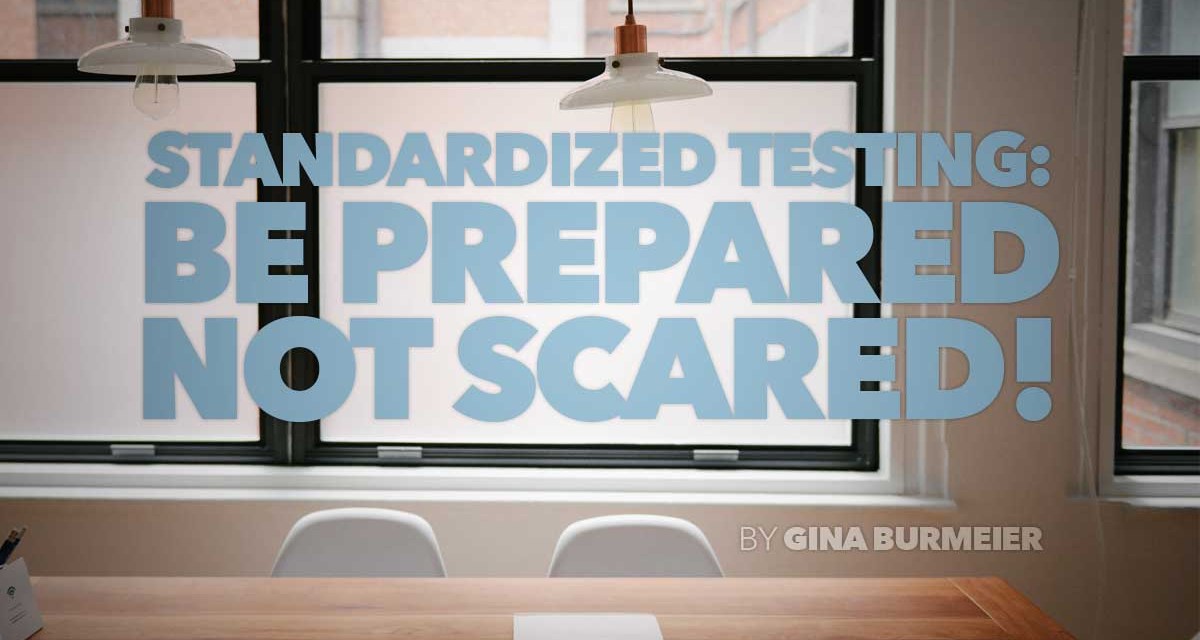If you have a high school student, no doubt he or she is gearing up for the standardized testing most students take their junior year. The ACT and/or SAT are important tests for homeschoolers and many want to make sure they are fully prepared. As a parent, you also wish to see your child succeed and perform to the best of his/her ability. Let’s look at the differences between the ACT and SAT, the recent changes to both tests, and some suitable prep books that greatly assist when studying for these tests. The more informed students are about each test, the better opportunity they have to decide which one (or maybe both) will be more appropriate for their end goals.
As standardized testing remains a vital criteria of a student’s ability to enter many universities, it is wise to know the differences between the ACT and SAT and be aware of recent changes that have come to both tests. With the reformatting of the SAT, the two tests have actually become much more similar. However, here are some notable differences between the ACT and SAT:
- The ACT alone includes science. This portion tests reading and reasoning skills, especially the ability to read and understand graphs, scientific hypotheses and research summaries.
- There is more geometry and trigonometry on the ACT (and more math topics in general). The SAT is more straightforward with math concepts and is heavily focused on algebra with very little geometry. Also, with the ACT, students will have to memorize any formulas needed, but the SAT provides formulas. The ACT allows a calculator for the entire math section while the SAT only allows a calculator for a portion of the math test.
- The SAT’s English section mainly focuses on writing style and expression of ideas while the ACT is focused more on sentence structure and grammar.
- The SAT’s reading portion examines particular points in a passage: the author’s writing style, and vocabulary. Whereas, the ACT is more about reading comprehension. Also, the SAT will generally direct the student to specific lines in the text while the ACT usually does not. Even if there is not a clear direction, reading questions on the SAT are in chronological order. However, the evidence-based questions on the SAT can be much more challenging.
Test Length
The SAT has 154 questions and an optional essay. The ACT has 215 questions and an optional essay. While both essays are optional, the SAT essay focuses more on comprehension and the ACT tests how well a student can evaluate and take a position on complex issues. Time Length of both tests: SAT (3 hrs. 45 min.); ACT (2 hrs. 55 min.).
Scoring
The SAT score is a total of 1600: 800 for math and 800 for evidence based reading combined with writing. This change makes a good math score more important than in previous test versions. The ACT provides a composite score of 1-36 based on the average of 4 test sections. For each of these exams though, the writing test receives a separate score.
Recently, there have been a few changes to both tests that are worth mentioning. Below are the updates for both:
ACT
- The ACT is adding a STEM score for science, technology, engineering, and math.
- A language arts score will be comprised of English, reading, and writing.
- The optional essay will be more advanced and will require test takers to provide multiple perspectives on a topic instead of just one view.
- The math portion will have additional statistics and probability problems.
- The reading test will require students to integrate knowledge and ideas across multiple texts. For example, comparing and contrasting two passages instead of one.
- There is a new Career Readiness Indicator aligned with Common Core Standards. This will show students where they need to improve on specific skills sought by employers.
SAT
- There is no penalty for wrong answers.
- There will be 4 multiple answers per question instead of 5.
- The essay is now optional and scored separately.
- There are fewer total number of sections, but the sections will be longer.
- There will be more evidence-based reading and writing. For example, students will be asked a question about the test and then asked which piece of evidence best supports that answer. The reading section will contain more graphs and charts and more excerpts from US founding documents.
- Foundational math skills will hold a greater importance, as well as problem solving and data analysis math skills.
When exploring each test, first find out if your state uses a certain test as part of their statewide testing regimen. More importantly, if your student has a few universities in mind, determine if these schools have test preferences. Looking at a university’s scholarship information will also give your student a goal to aim for. Oftentimes, there is a fair amount of scholarship money awaiting students with decent scores. Most students take the ACT or SAT once their junior year and one more time their senior year. By doing this, many students raise their test scores significantly. However, if a university your student is interested in will take his best overall score, it is advantageous for him to take it as many times as needed.
A knowledge about each test and aware of personal strengths and weaknesses will help a student tremendously when deciding which test is the best fit. Or maybe a student will decide to take both tests for various reasons and retake just one of them. Just remember, every situation is different and what is right for one person or family may not be right for another.
Being sufficiently prepared will be his greatest strength in avoiding test anxiety and assuring confidence. If your student is taking a test in the next month and hasn’t prepared, don’t fret. He can start preparing as much as possible now and use his test scores to see where he needs to improve next time. If he did not meet his goal with his first score, there is always another test date ahead. Stay positive. With hard work and determination, the score your student desires is eagerly waiting for him.
There are quite a few prep books that tremendously aid students when studying for these tests. Any of these books will do a thorough job of preparing your student. However, it is a good idea to gather information and study from a couple of different reputable books, allowing your student to be fully prepared. Another study option for the SAT is available online. Khan Academy is partnering with SAT to provide free test prep for students. There are 4 full-length practice tests, 8 short diagnostic quizzes, and interactive practice with instant feedback. Ideally, students will spend a fair amount of time preparing so they can be as confident as possible. Beginning to study at least three months before your student’s test date will provide ample time to absorb the information without cramming and feeling stressed at the last minute.
Below is a list of study materials that do an excellent job preparing students:
The Real ACT – Written by ACT test makers themselves. This book contains five real practice tests and gives great examples of the question format and content.
Official SAT Study Guide – Contains 10 practice test created by the test maker. It also provides lots of practice questions and approaches to use for answering different types of questions.
Cracking the ACT/SAT – Gives excellent strategies with drill example questions and clear explanations on how to “crack” them. Four practice tests are in each book (plus two online for the ACT), with explanations to all the answers.
Barron’s ACT 36 – If a student is willing to push himself, this book is very thorough and practice tests are more difficult than the actual test. It contains advice and strategies for more of the difficult questions.
Kaplan ACT/SAT 2016 – A comprehensive study book containing useful tips, strategies and challenging questions that can be more difficult than the actual test. SAT book contains four practice tests in the book and one online. ACT contains three tests in the book and three online.
ACT/SAT College Prep Course for the Christian Student – This book emphasizes spiritual development combined with detailed review of all test subject areas. Test sections are studied side-by-side rather than as a concentrated focus for a period of time. There are no practice tests included.





